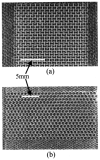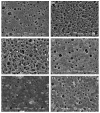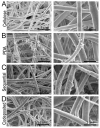Polymeric Materials and Microfabrication Techniques for Liquid Filtration Membranes
- PMID: 36236007
- PMCID: PMC9572744
- DOI: 10.3390/polym14194059
Polymeric Materials and Microfabrication Techniques for Liquid Filtration Membranes
Abstract
This review surveys and summarizes the materials and methods used to make liquid filtration membranes. Examples of each method including phase inversion, electrospinning, interfacial polymerization, thin film composites, stretching, lithography and templating techniques, are given and the pros and cons of each method are discussed. Trends of recent literature are also discussed and their potential direction is deliberated. Furthermore, the polymeric materials used in the fabrication process of liquid filtration membranes are also reviewed and trends and similarities are shown and discussed. Thin film composites and selective filtration applications appear to be a growing area of research for membrane technology. Other than the required mechanical properties (tensile strength, toughness and chemical and thermal stability), it becomes apparent that polymer solubility and hydropathy are key factors in determining their applicability for use as a membrane material.
Keywords: liquid filtration; membranes; polymers.
Conflict of interest statement
The authors declare no conflict of interest.
Figures













References
-
- Liquid Filtration Market. Markets and Markets: 2019; Report Number: CH 6693.
-
- Samatya S., Kabay N., Yüksel Ü., Arda M., Yüksel M. Removal of nitrate from aqueous solution by nitrate selective ion exchange resins. React. Funct. Polym. 2006;66:1206. doi: 10.1016/j.reactfunctpolym.2006.03.009. - DOI
-
- Qin L., Vervuurt S.J.N., Elmes R.B.P., Berry S.N., Proschogo N., Jolliffe K.A. Extraction and transport of sulfate using macrocyclic squaramide receptors. Chem. Sci. 2020;11:201. doi: 10.1039/C9SC04786G. - DOI
-
- Kim S., Nham J., Jeong Y.S., Lee C.S., Ha S.H., Park H.B., Lee Y. Biomimetic Selective Ion Transport through Graphene Oxide Membranes Functionalized with Ion Recognizing Peptides. J. Chem. Mater. 2015;27:1255. doi: 10.1021/cm504212j. - DOI
Publication types
LinkOut - more resources
Full Text Sources
Miscellaneous

